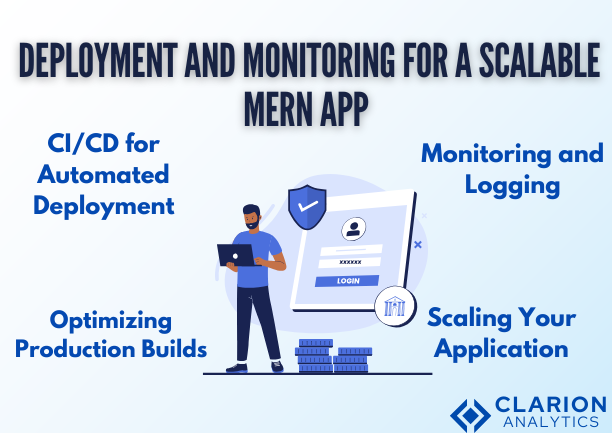
1. Structuring Your MERN Application for Maintainability
Project Structure Best Practices
The proper organization of a MERN project boosts both its maintainability and capacity for growth. A modular process should be followed with unique folders for both models and controllers and routes and utilities within the backend partition. The frontend user interface should locate its components alongside hooks and context inside unique directories.
Separation of Concerns
The application needs to divide functionality between front-end React and back-end Express/Node.js implementation. A distinct API interface layer must be used for all requests and business process rules must remain out of the route control section.
Using MVC Architecture
MVC pattern deployment maintains a structured codebase structure. Models take responsibility for handling data resources and controllers operate logical operations and views oversee the user interface. The organization produces better scalability together with easier debugging capabilities.
Environment Variables Management
Sensitive data, such as API keys and database credentials, should be stored in .env files and excluded from version control using .gitignore. Use libraries like dotenv to load environment variables securely.
2. Optimizing Backend Performance and Security
Efficient Database Queries
Optimize MongoDB queries by indexing frequently queried fields. Use aggregation pipelines and lean queries to fetch only necessary data.
Middleware Usage in Express
Utilize middleware for authentication, logging, and error handling. Tools like Morgan help with request logging, while error-handling middleware ensures consistent API responses.
Rate Limiting and CORS Handling
Implement rate limiting using express-rate-limit to prevent abuse. Configure CORS correctly to allow only necessary origins to access APIs.
JWT Authentication and Secure API Design
Use JWTs for authentication and refresh tokens for session management. Secure APIs with role-based access control and input validation using libraries like Joi or Express Validator.
3. Enhancing Frontend Performance in React
Component Reusability and Optimization
Utilize functional components and React hooks to write reusable code. Memoization with React.memo and useCallback prevents unnecessary re-renders.
State Management Best Practices
Choose the right state management solution. Context API is suitable for small apps, while Redux or Zustand is better for large-scale applications.
Lazy Loading and Code Splitting
Enhance page load speed by implementing dynamic imports using React’s React.lazy and Suspense. Code splitting helps reduce bundle size.
Optimized API Calls with React Query or SWR
Use libraries like React Query or SWR to manage API requests efficiently, reducing unnecessary re-fetching and improving caching mechanisms.
SEO and SSR in React Applications
Leverage Next.js for server-side rendering (SSR) to improve SEO and performance. Static site generation (SSG) can further optimize content delivery.
4. Deployment and Monitoring for a Scalable MERN
CI/CD for Automated Deployment
Implement continuous integration and deployment pipelines using GitHub Actions, Jenkins, or Docker to automate build and deployment processes for scalable mern
Optimizing Production Builds
Reduce bundle sizes with tree shaking and minification. Enable gzip compression to improve page load speed.
Monitoring and Logging
Use tools like Prometheus, Datadog, or LogRocket for real-time monitoring. Implement structured logging with Winston or Morgan.
Scaling Your Application
Scale your Node.js server using PM2 for process management. Implement horizontal scaling with load balancers and deploy on platforms like AWS, Vercel, or Heroku for better uptime in Mern
Are you intrigued by the possibilities of AI? Let’s chat! We’d love to answer your questions and show you how AI can transform your industry. Contact Us
